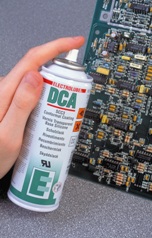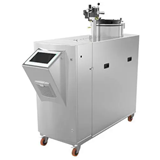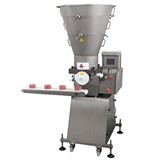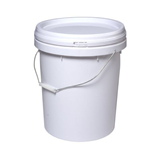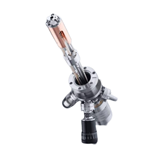There are many issues to consider when specifying coatings for printed circuit boards.
New circuit boards have excellent performance qualities. This performance, however, can be easily compromised by several factors, such as the absorption of air moisture by someone breathing on the circuit board or contamination from ionic substances such as fingerprints.
"In order to avoid these problems boards for more demanding and high specification applications are often conformally coated at the last stage of manufacturing," Dr J. F. Humphries – technical director at Electrolube said.
Conformal coatings are typically applied to circuit boards by dipping or spraying the boards. Coatings can also be applied by brushing the coating on.
The process is particularly important in vehicle under-bonnet applications and also military, aerospace and industrial applications, especially in safety critical areas.
"The ideal conformal coating will have performance requirements that include good electrical properties, low moisture permeability, good chemical resistance and mechanical durability," Humphries said.
The conformal coating should adhere well to all the board’s materials, such as the basic board material, solder resist, copper, solders and numerous materials used for components needed to populate the board.
Good thermal properties are also important. The circuit board should remain flexible at low temperatures and retain a high retention of mechanical properties at elevated temperatures.
"The most effective conformal coating, as far as processing characteristics are concerned, will be one-part systems, as two-part systems are very inconvenient to use," Humphries said.
"They should also have a long bath life, a low curing or drying temperature and short drying time. Viscosity should be easily adjustable so that it can be optimised for the equipment used."
There are, however, some limitations. If boards are coated with contaminants already on the surface, they will be sealed in. This has the potential to cause long-term problems. Therefore, boards should always be cleaned and dried properly before application of the coating.
Conformal coatings can be made from several different products.
"Silicones cover rather a wide family of different materials, with a range of differing characteristics and properties. All silicone coatings are characterised by very good high temperature performance, compared with other types of coating," Humphries said.
He said water-based conformal coatings have also been developed in response to increasing environmental pressures against the use of organic solvents. However, these types of coatings are generally slow to dry and "mud cracking" can occur with increased coating thicknesses.
"We anticipate that there will be increasing environmental pressures against the release of organic solvents into the atmosphere, with the consequent effect on global warming, general environmental pollution and smog formation," Humphries said.
"These environmental pressures will necessitate both increasing measures to trap and recover released solvent and also further development of UV cure and water-based coatings to raise their performance closer to that of the more traditional solvent-based materials.
"We will also see further steps to develop both high solids and, ultimately, solvent-free coatings."

